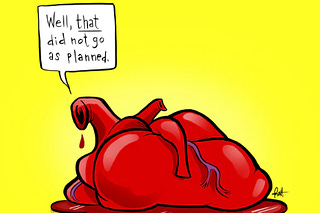
Discover more from The Worked Shoot
The bruhaha late this week with Twitter effectively banning Substack from their platform, I decided to play hooky Friday and crank out a Dodo Bird model portfolio update for this week’s The Worked Shoot. Then the holiday weekend kicked in and various piecemeal ‘sessions’ of writing resulted in a Monday release - apologies.
Please read the linked piece for more information on this exercise and the intent behind it. I am posting ‘transaction’ updates for the model via the Substack chat function, which is available either on their app or via a web browser.
As described in the model introduction from early January, the neutral weights in the model provide a framework around which the broader analytical approach at Kayfabe Capital can work. Here is the paper portfolio ($100k initial amount) as of Thursday’s US close, with closed positions listed at the top:
The goal of the model is to generate 3-5%+ average annual “real” returns over full market cycles, with drawdowns and volatility profiles generally below those of traditional strategic asset allocation strategies.
After having meandered around breakeven for the first 10 weeks of performance, the model suffered a drawdown of about 4%, having swung from being up about 2% to down about 2%. With global stock markets getting off to an explosive start to the calendar year, within the context of my expectation that the current regime remains a recessionary cyclical bear market, I have progressively adjusted exposure to moving from what had been relatively neutral equities, to now maintaining what is intended to be near-maximum short exposure.
The Kayfabe Capital cycle timeframe base case remains that a severe global recession will unfold, with financial markets (excluding interest rates) not yet discounting this scenario. As coincident data finally began to rollover in March, model positioning has shifted to be more exposed to:
Lower global stock prices
Higher equity market volatility
Those are the highest conviction elements within the Dodo Bird model framework through the lens of the Kayfabe Capital process. However, those elements have their own issues with volatility on a day to day, week to week, and month to month basis.
As a result, I decided to reduce other elements of potential volatility within the model - namely gold and long-term US Treasury bonds. So far, and particularly since the March low following the recent developments with banks, these moves have resulted in the 4% drawdown.
While drawdowns are never enjoyable, this one has been of the “bring it on” variety, which is to say that it has transpired in a way that presents opportunity from a cycle timeframe, in my view.
The ability to increase short exposure to stock prices, as well as get long volatility around recent levels given the cyclical backdrop, was a “gift” of sorts. As short-term market moves can be very chaotic during these sorts of periods, the level of volatility in the model will have been more than worth the potential gains in the coming weeks and months, in my opinion.
I remain agnostic on the pathway for gold and long-term US Treasury bonds at present. Should they experience material price declines in the coming weeks, then I expect to dramatically increase exposure. Conversely, as laid out in Golden Goose, a “breakout” may catalyze me to increase exposure, though likely to a lesser degree.
The elimination and reduction of CTA and global macro vehicles were similar to the elimination of ZROZ and reduction in PHYS, as the moves reduced model exposure to more volatile elements. So far, doing so has been a drag on recent performance.
Trend following CTA’s were largely pummeled in March, as short-term interest rate markets, to which many had significant exposure, experienced historically abrupt and severe reversals. The CTA ETF position violated position-specific risk management criteria within the Kayfabe Capital process and clarified the decision to eliminate it as part of the elemental reduction.
From current levels and within an alignment of short, intermediate, and cycle timeframes, the Dodo is by far most exposed to the two highest conviction portfolio elements listed above. The conviction level, combined with the associated volatility, catalyzed a reduction in other model elements. I expect significant stock market weakness to unfold in the coming weeks/months, with risks of tail events and related spikes in volatility very elevated. The allocation to cash remains relatively high, enabling ample “dry powder” should opportunities present themselves.
For example, the recent explosion in mainstream discussion of the potential loss of reserve currency for the US dollar was symptomatic of what had become a classic Kayfabe Capital setup. The 10% allocation to UUP, an ETF linked to the US dollar index, was made on Thursday in accordance with the setup. In effect, the position is a “cash replacement” vehicle that I believe offers potential returns in the coming weeks/months above that of holding T-bills.
Given the current exposure/gearing in the Dodo and the opportunity set for the remainder of this year, my optimism about reaching the model’s objective as this cycle matures is very high. If/when levels of equity market volatility begin to increase, position adjustments within the Dodo are likely to be far more frequent, so if interested, the Substack App will be the best way to remain informed.
















